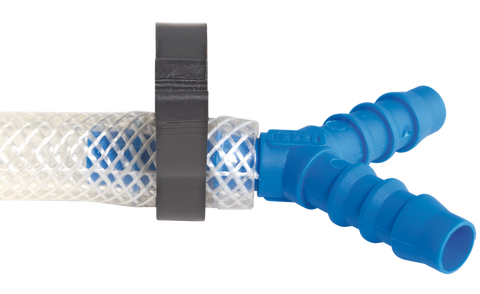The following section provides general information on clamping related technical issues. For certain products, more comprehensive information is available in the form of a Technical booklet.
Pipe fitting design
An effective clamping solution relies, not only on the hose and hose clamp but also on the pipe fitting. In order to select a fitting for optimum sealing performance, the following points must be taken into consideration:
-
A barbed profile is normally best for sealing, however, this may not be true for thin-walled or low-pressure applications.
-
The pipe fitting should be sized in order that the hose stretches slightly over the fitting. Undersize fittings may cause the hose to bunch up, thus creating a leak path. Oversize fittings will make it difficult to apply the hose.
- The pipe fitting should be of sufficient strength to withstand the compressive force of the clamp. This is particularly relevant for heavy-duty clamps.
Diameter vs Axial thrust
The pressure inside a hose will create an axial thrust, which will tend to force the hose off the end of the pipe fitting. The purpose of a hose clamp is to retain the hose on the fitting, despite the axial thrust.
Axial thrust is proportional to the pressure in the hose and the square of the hose diameter. Therefore, for a given pressure, the axial thrust of a 200mm internal diameter hose is 100 times greater than for a 20mm internal diameter hose. For this reason, heavy-duty hose clamps are required for large diameter hoses, where the pressure is significant.
Tensioning
Tightening the clamp to the correct tension is essential for reliable performance.
For Worm Drive, Screw and Bolt clamps, a maximum torque figure is provided. The higher the input torque for a given clamp, the higher the clamping force will be. However, this figure must not be used to compare the relative strength of clamps; as other factors, such as the screw thread and the band width also play a part. Information on recommended tensioning for the Herbie Clip® range can be found in the Herbie Clip® and Ezyclik® Technical Booklet.
Hose clamp positioning
Tightening a hose clamp will result in compression of the hose. Upon compression, there will also be a certain amount of hose distortion. If the clamp is positioned too close to the end of the hose, there is a risk the clamp will slip off. Ensure that the clamp is at least 4mm from the end of the hose, as shown.

For additional information, please contact HCL directly.





